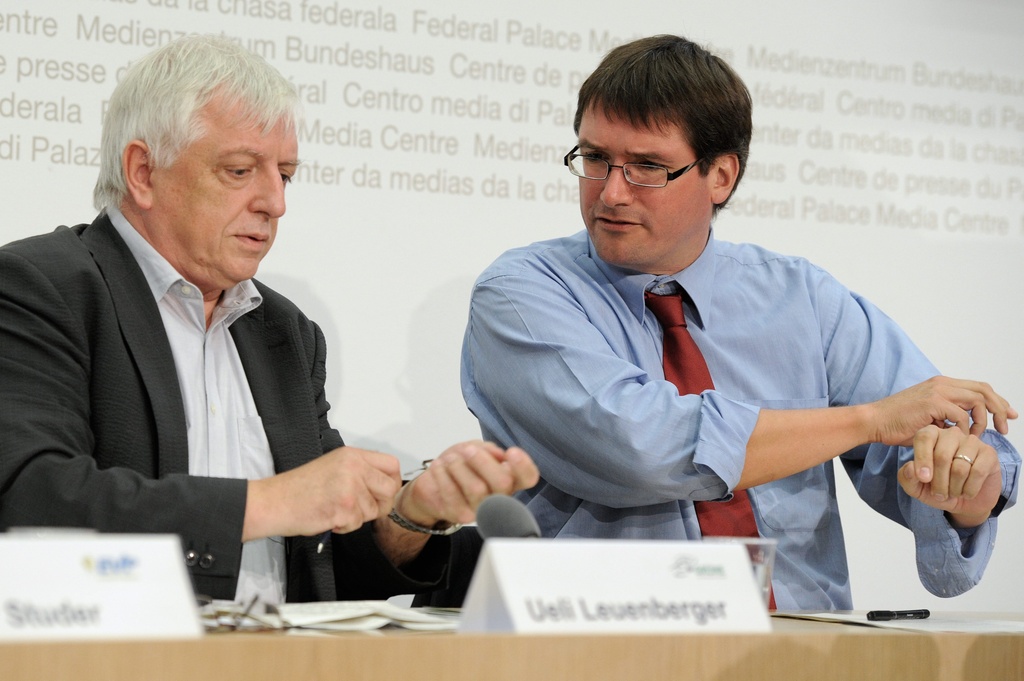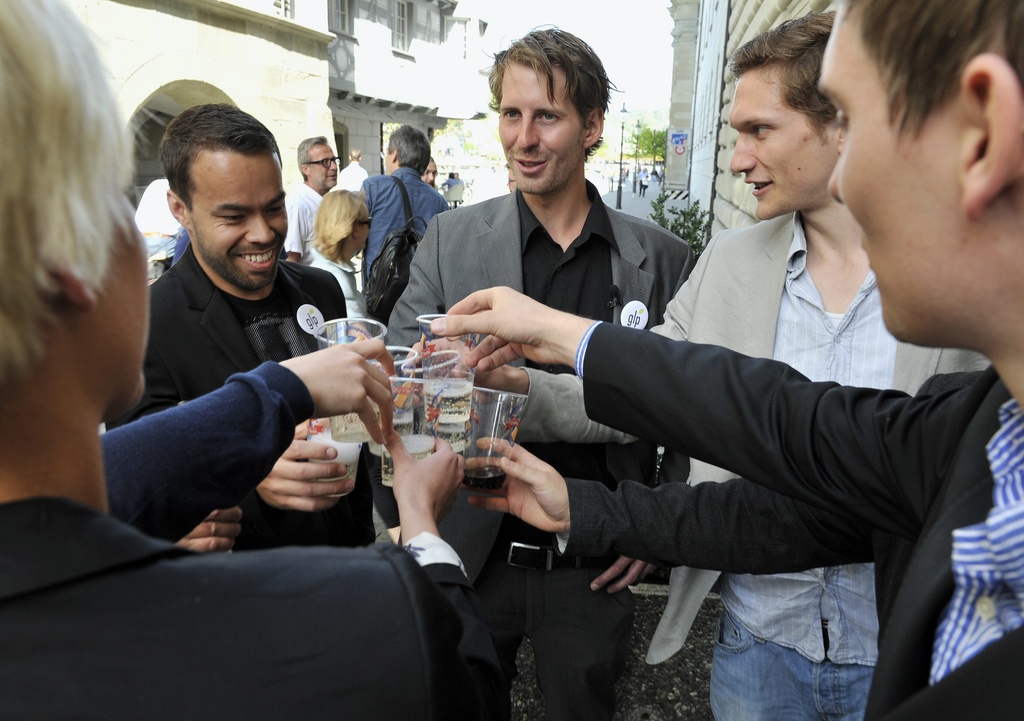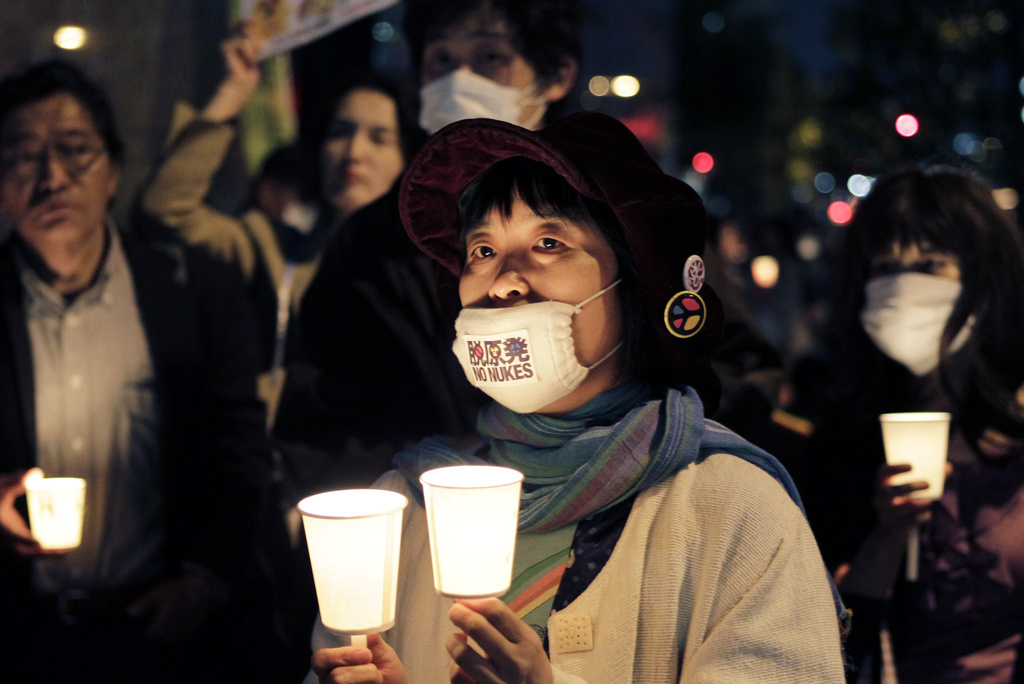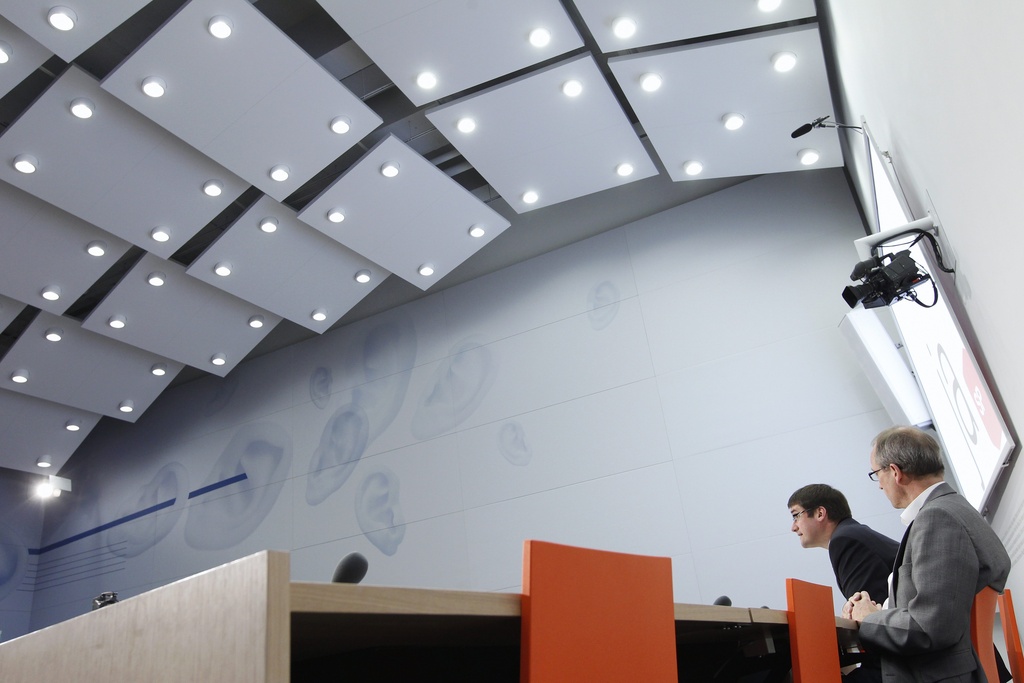Left grapples with limited voter appeal

The Social Democratic Party and the Greens are at the same time allies and opponents with similar political agendas but limited appeal.
They both cover the left of the political spectrum despite their different historical origins, and champion social and environmental issues.
While the Social Democrats are struggling to confirm their 20 per cent share of voter support, the Greens look likely to break through the ten per cent ceiling for the first time in October’s parliamentary election.
The electoral ambitions of the Social Democrats appear rather modest, but they are realistic given the results of local and cantonal elections over the past three years and recent opinion polls.
Following a marked loss of voter support in 2007, the party underwent a shake-up with a younger leadership raising speculation that it could open up towards the centre.
“We refocused on economic and social issues,” said 40-year-old party president Christian Levrat.
Instead of seeking a Third Way like the Labour Party under Tony Blair, the Social Democrats appear to favour a return to traditional values as delegates, led by a more radical youth chapter, last year approved a manifesto calling for a break with capitalism, Swiss membership in the European Union and the abolition of the Swiss army.
Controversial programme
The decision caused considerable unease among the grassroots, as the party is no longer the main representative of the low-income working class and instead typically has many teachers and people from social service sector among its ranks.
Nevertheless many observers consider the programme an attempt to give the party a clearer profile in the scramble for public attention.
In fact the election manifesto is a much more pragmatic and modest mix of conventional demands for more social justice, fair pensions, an affordable health system and housing as well as a sustainable economy with environmentally friendly technology.
The discrepancy is not a contradiction, says parliamentarian Stéphane Rossini, as the programme is a long-term vision, while the election platform sets the priorities for the next few years.
Global
While the Greens share some of the political aims of the Social Democrats – and get their support from people primarily in urban areas and from a similar social background – they are still primarily the party which has been putting environmental issues high on the agenda since the 1970s.
“Our roots are in the anti-nuclear movement and the nuclear accident in Japan has proven us right,” said parliamentarian and party president Ueli Leuenberger.
Of the five main parties, his group most likely has the smallest campaign budget but it looks set to benefit most from global events such as the disaster at the Fukushima power plant.
Four years ago the Greens gained additional seats not least as a result of the international debate on climate change.
It remains to be seen to what extent the party can also take advantage of the current political climate or whether the rival Liberal Greens, a split-off group founded four years ago, will share that role.
Threshold
Whether the economy is booming or in crisis, the combined political left has never been able to gain more than about 30 per cent of the vote in parliamentary elections.
Over the past three decades the Social Democrats and Greens have seen their respective voter share go up and down like a set of scales. The small Alternative Left group – a successor to the Communist Party – saw its share shrink to below one per cent ten years ago.
But while the left in neighbouring European countries succeeded in winning majorities after being in opposition, its counterpart in Switzerland is limited by the country’s balanced political system with a fragmented political landscape.
Represented in the multi-party government since 1943, the Social Democrats appear to see no need to shift to the centre, as political scientist Michael Hermann of Zurich University points out.
However, in daily politics it remains important for a group to forge alliances and make compromises to achieve tangible results as the three camps – left, centre, right – are roughly equally strong and have been fairly stable for many years.
Parliament comprises a 200-seat House of Representatives and a 46-strong Senate.
The next elections for a four-year term take place on October 23 .
There are currently 12 parties represented in the chambers, five of them are also represented in the government.
The rightwing Swiss People’s Party is the largest group with a total of 66 seats, ahead of the Social Democrats, the Radicals, Christian Democrats and the Greens.
The Social Democrats are the second biggest group in parliament with 49 representatives in parliament, including eight senators. (Out of a total of 246 seats)
Since 1959 the party has always had two representatives in the seven-member cabinet.
Founded in the 1880s, the centre-left Social Democrats only began to play a greater role on the national political stage as a result of a revamp of the electoral system in the wake of major social unrest after the First World War.
Up to the end of the 1970s the Social Democrats (sometimes also referred to as Socialists) regularly scored highest in parliamentary elections, but they dropped to 19.5% in the 2007 elections.
The party claims about 35,000 members. Historically it has strong ties with the Trade Union Federation and is often considered more to the left in the French- and Italian-speaking regions of the country than in the main German-speaking part.
The first local chapter of the Green Party was founded in western Switzerland in 1971 to combat the construction of a stretch of motorway.
The first Green Party representative was elected to the federal parliament in 1979. A national Green Party headquarters was set up in 1983.
After a row in the Zurich chapter of the party the Liberal Green Party – a more moderate and centrist – split-off was founded in 2007.
In the most recent general elections the Greens won 9.6% of the vote. They have 20 representatives in the House of Representatives and two in the Senate. In parliament the party has an alliance with the only representative of the Alternative Left, formerly Communists, and a Christian Social Democrat.
It is the biggest non-governmental party in parliament and claims about 7,500 grass root members.

In compliance with the JTI standards
More: SWI swissinfo.ch certified by the Journalism Trust Initiative





You can find an overview of ongoing debates with our journalists here. Please join us!
If you want to start a conversation about a topic raised in this article or want to report factual errors, email us at english@swissinfo.ch.